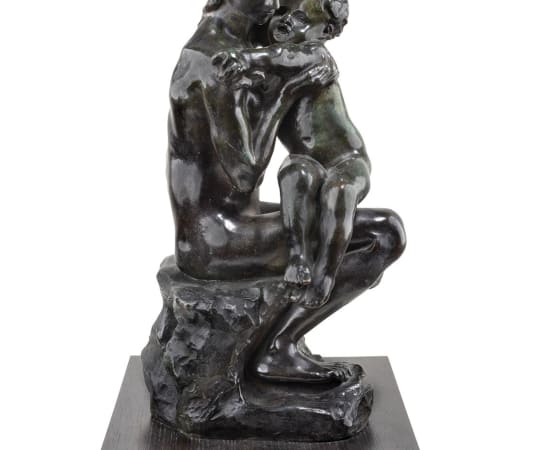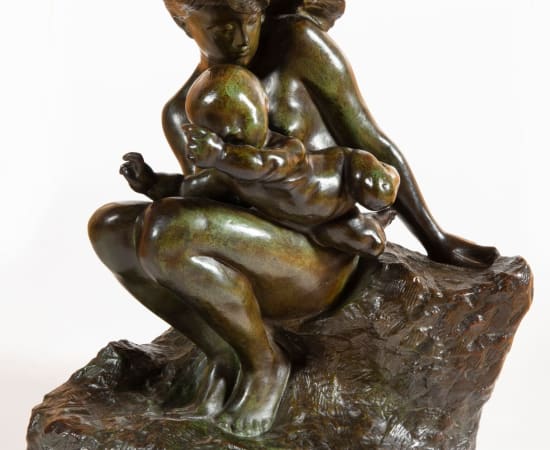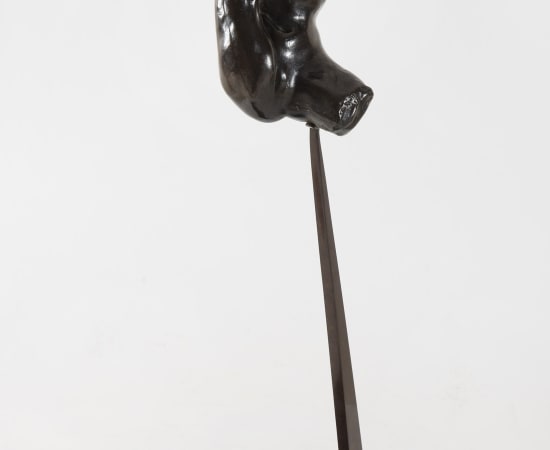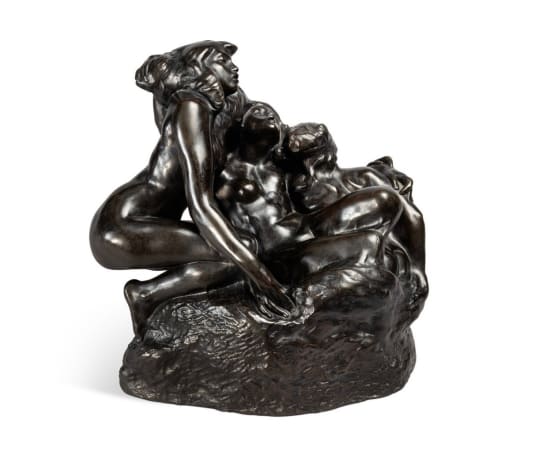Auguste Rodin (1840-1917) French
-
 Frère et soeur, Conceived circa 1890-1891, Cast in April 1903
Frère et soeur, Conceived circa 1890-1891, Cast in April 1903 -
 Amour qui passe, Conceived in 1885, Cast circa 1896-1901
Amour qui passe, Conceived in 1885, Cast circa 1896-1901 -
 Femme nue allongée, circa 1908-1914
Femme nue allongée, circa 1908-1914 -
 Petit Torse d'Iris dit aussi Petite Étude pour Iris, Messagère des Dieux avec Tête et Jambe Droite Levée, Conceived circa 1908-1909 I Cast in 1973
Petit Torse d'Iris dit aussi Petite Étude pour Iris, Messagère des Dieux avec Tête et Jambe Droite Levée, Conceived circa 1908-1909 I Cast in 1973 -
 Néréides, agrandissement dit aussi "Trois sirènes, grand modèle" ou "La Vague", Created in 1887, Cast in 1981
Néréides, agrandissement dit aussi "Trois sirènes, grand modèle" ou "La Vague", Created in 1887, Cast in 1981
Огюст Роден (Auguste Rodin, 1840–1917) — французский скульптор-новатор, заложивший основы современной скульптуры. Он родился 12 ноября 1840 года в Париже и с раннего возраста проявлял художественные способности. В 14 лет он поступил в Малую школу (Petite École) — учебное заведение, специализировавшееся на рисовании и математике. Несмотря на несколько неудачных попыток поступления в Школу изящных искусств (École des Beaux-Arts), Роден не сдался и стал декоративным художником, совершенствуя свое мастерство в моделировании и скульптуре.
В 1864 году Роден представил в Парижском салоне свою первую значимую скульптуру — "Человек с сломанным носом" (L’Homme au nez cassé). Из-за своей грубой реалистичности и незавершенного вида эта работа была отклонена жюри, но уже тогда она обозначила его отход от традиционных канонов скульптуры. 1875 год стал переломным моментом в его карьере — поездка в Италию и знакомство с произведениями Микеланджело (Michelangelo) и Донателло (Donatello) оказали огромное влияние на его художественное восприятие. Вернувшись во Францию, он создал "Век бронзы" (L’Âge d’Airain, 1877) — настолько реалистичную скульптуру, что его обвинили в том, что он использовал слепок с живой модели. Однако эта полемика только усилила его известность, подчеркнув его исключительное мастерство в передаче эмоций и человеческой формы.
В 1880 году Роден получил заказ на создание портала для будущего музея декоративного искусства в Париже, который превратился в его самый амбициозный проект — "Врата ада" (La Porte de l’Enfer), вдохновленный "Божественной комедией" Данте. Хотя сам музей так и не был построен, а работа осталась незавершенной, из этой композиции родились несколько самых известных скульптур Родена, включая "Мыслителя" (Le Penseur) и "Поцелуй" (Le Baiser). Эти произведения демонстрируют его гениальную способность передавать сложные эмоции через динамичные формы.
Роден совершил революцию в скульптуре, сделав акцент на реализме, характере и глубокой эмоциональности. Он нередко оставлял свои работы в "незавершенном виде", подчеркивая их естественную и грубую красоту. Его скульптурные портреты знаменитых личностей, таких как Оноре де Бальзак (Honoré de Balzac) и Виктор Гюго (Victor Hugo), закрепили его статус величайшего скульптора своего времени. Несмотря на критические отзывы и споры, он оставался верен своему искусству, создавая произведения, которые бросали вызов традиционным эстетическим нормам и открывали путь новым поколениям художников.
Галерея Bailly отдает дань наследию Огюста Родена, представляя коллекцию его скульптур, рисунков и гравюр. Эти произведения помогают глубже понять творческий процесс мастера, а также его огромное влияние на современное искусство. Через выставки и академические исследования Галерея Bailly предоставляет коллекционерам и ценителям искусства уникальную возможность познакомиться с творчеством Родена и оценить тонкость его художественного языка и новаторство его идей.









